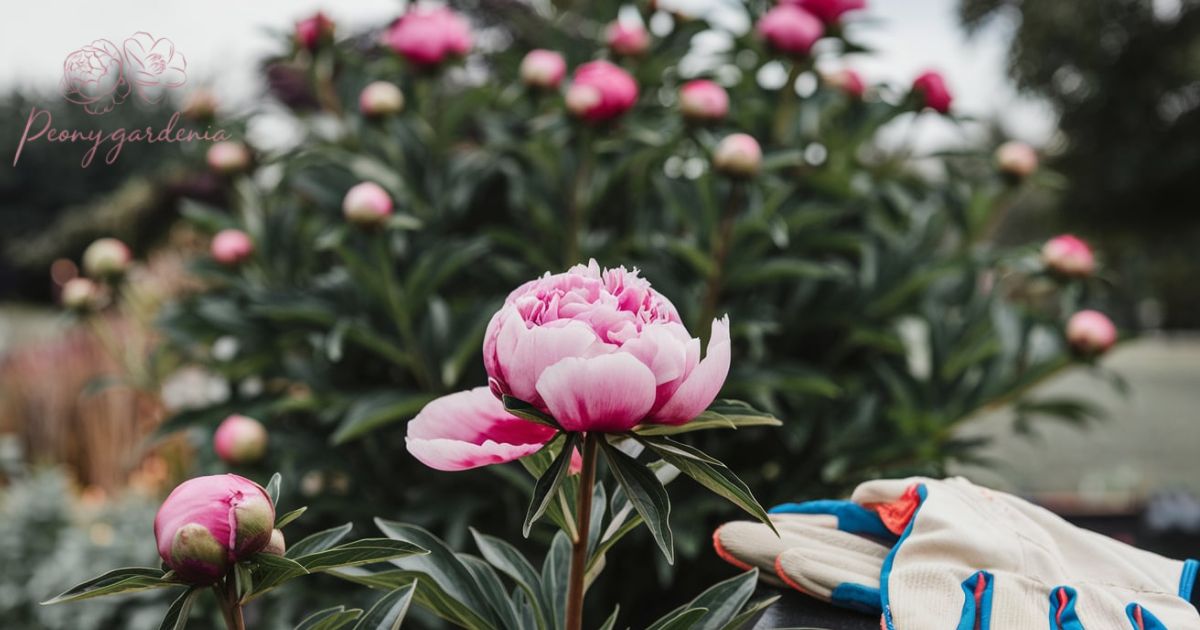Peonies are beautiful, hardy plants that can add a touch of elegance to any garden. While they are relatively easy to care for, providing them with the right amount of water is key to their growth and blooming success. Understanding how often to water peonies and how to adjust care based on soil type, weather, and plant stage ensures they thrive throughout the seasons.
Watering peonies requires a balance to avoid issues like root rot or dehydration. In this guide, we’ll explore the factors that affect watering frequency, including the type of peony, the soil conditions, and seasonal changes, so you can help your peonies flourish.
Understanding Peonies Watering Needs
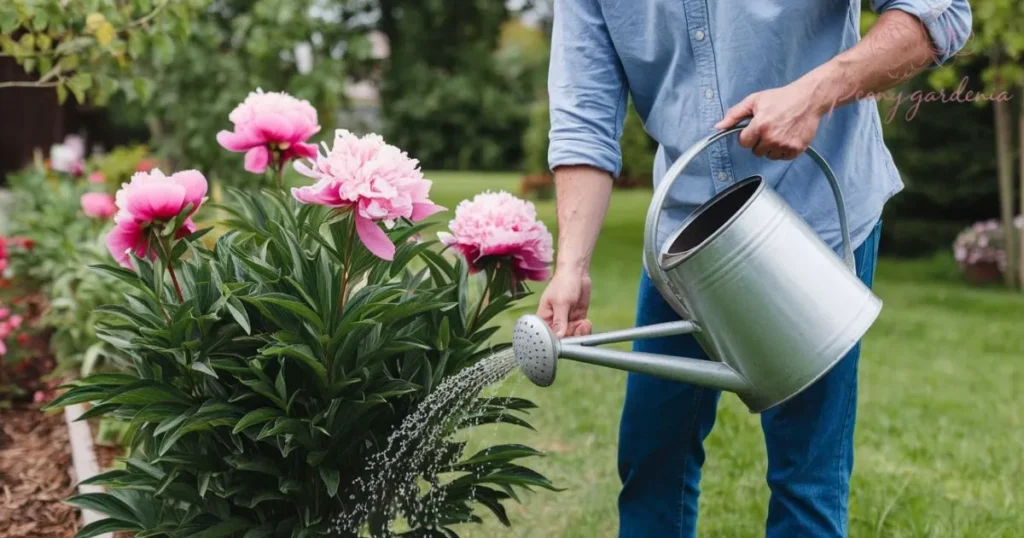
Peonies are hardy plants but require proper watering to thrive. Striking a balance is crucial to avoid issues like root rot or dehydration. Their needs vary depending on the type of peony and their growth stage.
To ensure success, consider the natural environment peonies prefer. They thrive in well-drained soil and benefit from consistent, moderate moisture. Let’s explore their requirements in more detail.
Read More: How to Successfully Grow Peonies
Peony Types and Water Needs
Peonies come in three main types:
- Herbaceous Peonies: These are common garden peonies that die back in winter and regrow in spring.
- Tree Peonies: These are woody shrubs that keep their structure year-round.
- Itoh Peonies: These are hybrids combining features of herbaceous and tree peonies.
Factors Affecting Water Frequency
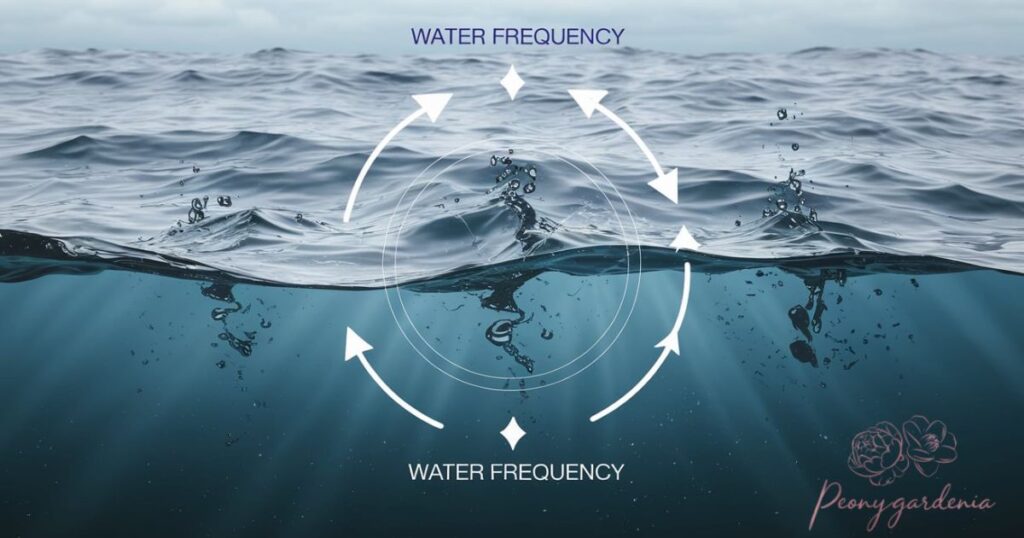
Watering needs depend on factors like soil type, weather, and the plant’s growth stage. Adapting your routine based on these factors can help your peonies thrive.
Soil Type
Soil type plays a crucial role in determining how often peonies need watering. Peonies thrive in well-drained soil, as it ensures that water does not accumulate around the roots, preventing root rot. Clay soil holds moisture for a longer period, so peonies planted in clay may require less frequent watering.
In contrast, sandy soil drains quickly and dries out faster, necessitating more frequent watering. To determine how often to water, it’s essential to test your soil’s drainage capacity. Understanding your soil type helps you adjust watering habits and maintain optimal moisture levels for healthy peony growth.
Weather Conditions
Weather conditions play a significant role in determining how often peonies should be watered. During hot and dry spells, peonies require more frequent watering to prevent dehydration and ensure proper growth. In contrast, rainy periods reduce the need for irrigation as natural rainfall provides sufficient moisture.
Humid climates also help maintain soil moisture, making regular watering less necessary. It’s essential to monitor local weather patterns and adjust watering schedules accordingly. By staying attentive to changes in temperature and precipitation, gardeners can prevent overwatering or underwatering, ensuring peonies thrive in diverse environmental conditions.
How Often Should You Water Peonies?
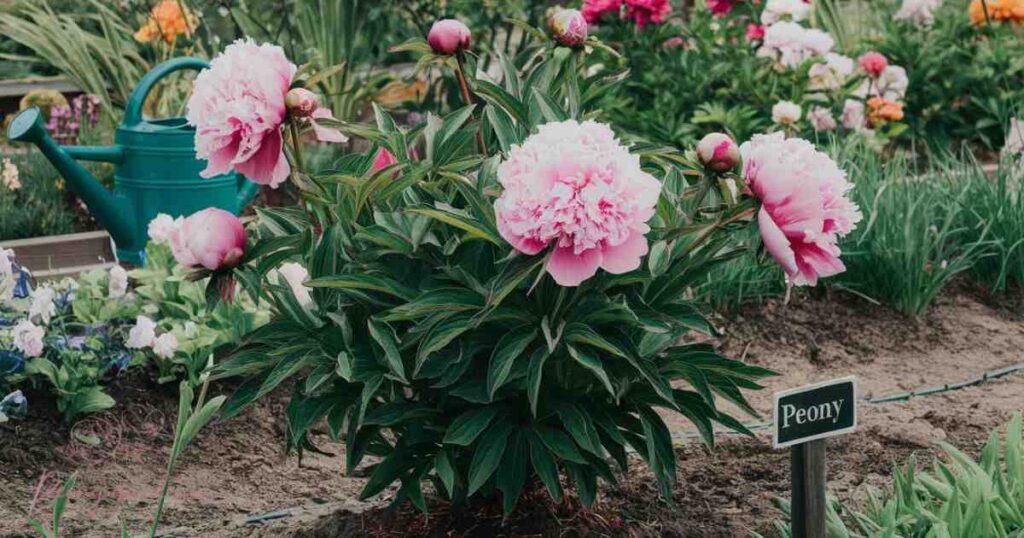
Peonies should be watered 2-3 times per week when newly planted to establish strong roots. Once established, water them once a week under normal conditions, increasing frequency in hot weather. During dormancy in winter, water sparingly, only when the soil is excessively dry, to prevent root rot.
Newly Planted Peonies
Newly planted peonies require extra attention to establish strong roots. Water them 2-3 times per week to ensure the soil stays moist but not soggy. Consistent moisture is essential during this early stage to support root development and encourage healthy growth. It’s important to check the topsoil regularly for dryness, as this can help determine when watering is necessary.
Be cautious not to overwater, as excess moisture can lead to root rot. Providing a balanced amount of water during the initial months will allow peonies to develop a strong foundation for future growth and blooms.
Established Peonies
Established peonies are well-developed plants that have had time to establish strong roots. Once peonies are fully established, they require less frequent watering compared to newly planted ones. Under normal conditions, water them once a week, ensuring the soil remains moist but not soggy.
In hotter climates, increase the watering frequency to every 4-5 days to prevent dehydration and maintain healthy growth. Deep watering is crucial for encouraging deep root development. It’s important to monitor the soil’s moisture levels regularly, adjusting the watering schedule based on weather conditions to ensure the peonies thrive year after year.
Dormant Peonies
Dormant peonies enter a rest period during the winter months, usually from late fall to early spring. During this time, their top growth dies back, while the roots remain alive underground, conserving energy for the next growing season. Watering during dormancy should be minimal to avoid root rot, as the plant’s water needs are significantly reduced.
It’s important to monitor the soil for excessive dryness, watering only when necessary, especially during extended dry spells. Overwatering during dormancy can harm the roots, so a light application of mulch can help maintain soil moisture and protect the roots from extreme temperatures.
Tips for Proper Watering
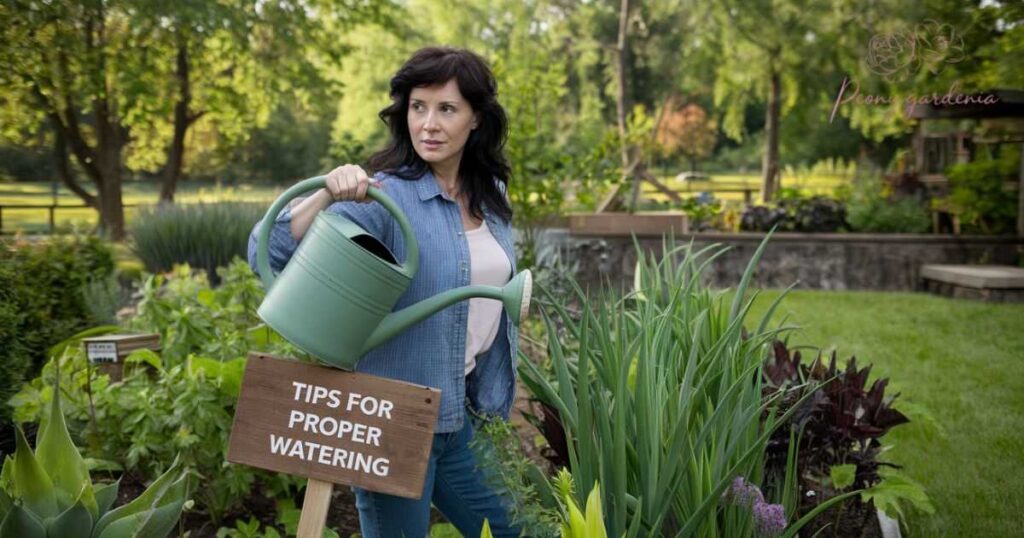
Watering peonies correctly promotes strong growth and healthy blooms. These tips can help:
Deep Watering
Ensure water reaches 8-12 inches deep for root hydration. Shallow watering doesn’t provide adequate moisture for the plant’s needs. Deep watering supports robust growth.
Mulching
Apply mulch around the base of peonies to retain soil moisture and regulate temperature. Organic mulches like bark or straw are ideal, preventing moisture loss and enriching the soil.
Avoid Overwatering
Check soil moisture regularly to avoid overwatering. Insert a finger into the soil to test moisture levels. If the soil feels damp, delay watering for a day or two.
Common Mistakes to Avoid
Common mistakes when watering peonies include overhead watering, which can lead to fungal diseases, and ignoring soil type, which affects moisture retention. Overwatering or underwatering can also harm the plant. Always water at the base, check soil moisture regularly, and adjust watering based on the soil’s drainage ability.
Watering Overhead
Watering overhead, or watering the leaves and stems of peonies, can lead to various issues that affect plant health. Wet foliage creates an environment conducive to fungal diseases like mildew and mold, which can harm the plant and reduce its vitality. Peonies prefer their roots to be the primary source of hydration, not their leaves.
It’s best to direct water at the base of the plant, ensuring that moisture reaches the soil where it can be absorbed by the roots. This method also helps maintain dry foliage, reducing the risk of disease and promoting healthy growth and blooms.
Ignoring Soil Type
Ignoring soil type when watering peonies can lead to improper moisture levels, which can harm the plant. Peonies thrive in well-drained soil, and the watering needs vary depending on the soil’s texture. For instance, clay soil retains moisture for longer periods, making it necessary to water less frequently, while sandy soil drains quickly and may require more regular watering.
Failing to account for soil type can result in overwatering or underwatering, both of which can stress the plant and inhibit growth. Understanding your soil’s drainage capabilities is essential to maintaining the right balance of moisture for healthy peony growth.
Seasonal Watering Guide

Peonies have distinct needs throughout the year. Tailor your watering practices to each season for the best results:
- Spring: As peonies emerge from dormancy, water regularly to support new growth. During the blooming period, maintain consistent moisture levels to encourage vibrant flowers.
- Summer: Increase watering during hot weather to prevent dehydration. Deep watering ensures roots receive sufficient hydration. Mulching helps reduce moisture loss in the heat.
- Fall: Reduce watering as temperatures drop. Overwatering in fall can cause root rot. Gradually transition peonies to their dormant state by reducing water frequency.
- Winter: Peonies require minimal water during dormancy. Protect roots with mulch and water only during prolonged drought conditions. Avoid overwatering to prevent root damage.
Conclusion
In conclusion, proper watering is essential for maintaining healthy peonies and ensuring vibrant blooms. By understanding the specific watering needs based on soil type, weather conditions, and the plant’s growth stage, you can provide the right care for your water peonies. Avoid common mistakes like overwatering or ignoring soil drainage, and tailor your watering routine to the seasons for optimal results.
Regular monitoring of soil moisture and implementing techniques like deep watering and mulching will promote strong root development and protect your plants from environmental stress. With the right approach, your peonies will thrive year after year, rewarding you with beautiful flowers.
FAQs
How often should I water peonies in summer?
Water once a week or every 4-5 days in hot weather.
Do peonies need watering during winter?
No, peonies require minimal water when dormant.
Can I overwater peonies?
Yes, overwatering can cause root rot and other issues.
What is the best time of day to water peonies?
Morning is the best time to water, allowing leaves to dry.
How do I know if my peonies need water?
Check soil moisture 2 inches below the surface. Water if it feels dry.
